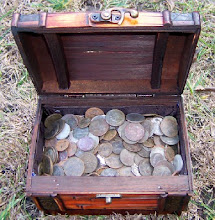 |
| Early Stowe |

In the summer of 1855, an ex-forty-niner Abial H. Slayton was fishing in the stream opposite his farm which was still at that time known as Hull Brook when his practiced miner's eye caught sight of a flake of gold. Slayton went home, fetched his gold pan, and soon satisfied himself that Hull Brook carried paying gold. The following November, Slayton bought the farm through which Hull Brook ran from Nathaniel Russell and soon had a crew of four men hard at work manning a sluice box.
Slayton claimed not to know how much gold he washed from what was afterwards known as Gold Brook, but natives recalled he quickly acquired a heavy gold watch chain, a large gold bracelet, several rings, and a gold cross in addition to whatever dust or nuggets he had laying about. Slayton searched for, but never found, the mother lode and supposed source of Indian Joe's supply.

In 1897, when he had panned a little gold to coat the last spike for the Mt. Mansfield Electrical Railroad,
Slayton told a newspaper reporter, "Where the supply is, I have no idea. I have frequently followed small veins of quartz, but they have invariably ended soon, not running into large ones, but instead are soon spent. I believe those are surface formations and that these fisher veins have come up from the bowels of the earth."

1 comments:
Thank you so much to share such an amazing and informative article about Logging Company Vermont. Keep us updating with more interesting articles.
Post a Comment